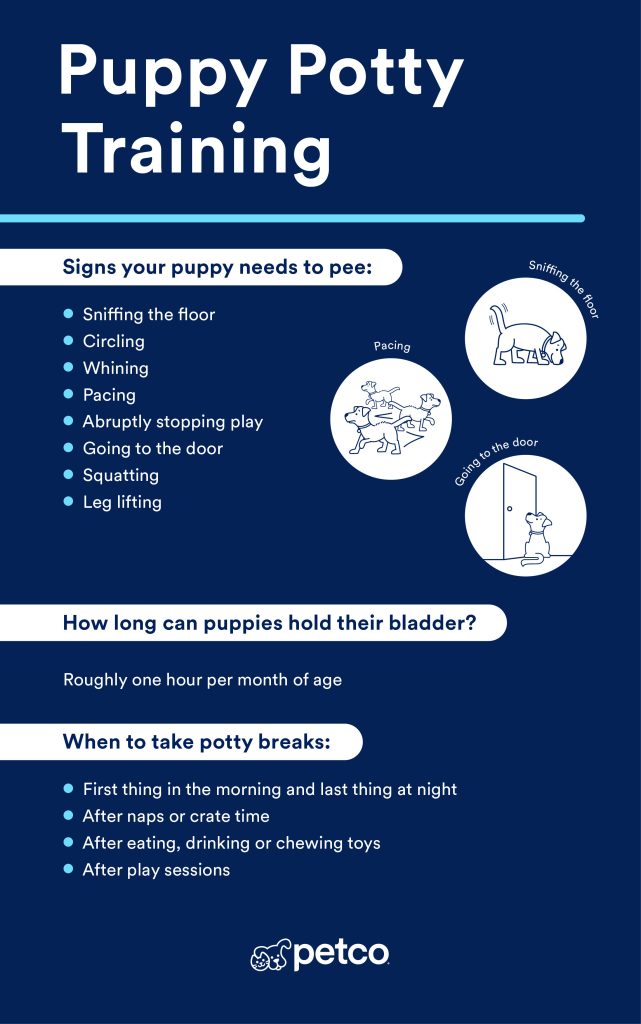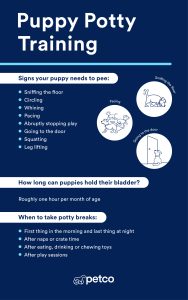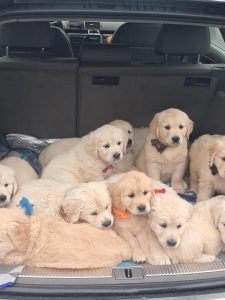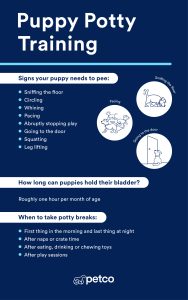Getting your puppy house trained can feel overwhelming, but it doesn’t have to be. Imagine a home where accidents are rare, and your puppy knows exactly where to go.
That’s possible, and you’re closer to making it happen than you think. With the right tips and a little patience, you’ll build a strong routine that works for both you and your furry friend. Keep reading, and discover simple, effective ways to make house training a smooth and even enjoyable experience for you and your puppy.

Credit: medium.com
Choosing The Right Supplies
House training a puppy needs the right supplies. These help your puppy learn good habits fast. Picking what you need makes the process easier.
Good supplies keep your home clean and your puppy safe. You will feel more confident with the right tools at hand.
Selecting Crates And Pads
Choose a crate that fits your puppy comfortably. It should be big enough to stand, turn, and lie down. Crates help teach your puppy to hold it until you take them outside.
- Pick crates with good ventilation and secure doors.
- Use soft pads inside for comfort and cleanliness.
- Change pads often to prevent odors and mess.
- Place the crate in a quiet, familiar spot.
Essential Cleaning Products
Cleaning accidents quickly is key to house training success. Use the right products to remove stains and smells. This stops your puppy from returning to the same spot.
| Product Type | Use |
| Enzyme Cleaner | Breaks down urine and odor |
| Pet-Safe Disinfectant | Kills germs without harm |
| Paper Towels | Absorbs wet messes fast |
| Gloves | Protects your hands during cleaning |
Establishing A Routine
Training a puppy needs patience and a clear routine. A steady schedule helps your puppy learn faster.
Dogs feel safe when they know what to expect. Setting times for meals and potty breaks builds good habits.
Consistent Feeding Times
Feed your puppy at the same times each day. This helps their digestion and potty schedule.
- Choose two or three feeding times daily.
- Give the right amount of food each time.
- Keep feeding areas clean and quiet.
- Remove food after 15 minutes if not eaten.
Regular Potty Breaks
Take your puppy outside often to prevent accidents. Puppies need breaks after eating, sleeping, and playing.
| Time Since Last Activity | When to Take Puppy Out |
|---|---|
| After waking up | Immediately |
| After eating or drinking | Within 10-15 minutes |
| After playtime | Right away |
| Every 1-2 hours | Regular potty breaks |
Effective Training Techniques
House training a puppy takes patience and clear methods. Using the right techniques helps your puppy learn faster.
Focus on simple and consistent training steps. This makes the process easier for both you and your puppy.
Positive Reinforcement
Positive reinforcement means rewarding good behavior. This encourages your puppy to repeat the actions you want.
Use treats, praise, or playtime as rewards. Give them immediately after your puppy goes potty outside.
- Give a small treat right after the puppy finishes
- Use a happy tone when praising
- Offer petting or play as a reward
- Avoid punishment to keep trust strong
Using Commands And Signals
Teach your puppy simple commands related to house training. Clear words help your puppy understand what you want.
Combine commands with hand signals. This helps your puppy learn faster by using both sight and sound.
- Use words like “Go potty” or “Outside”
- Show a hand signal, like pointing outside
- Be consistent with the same words and signals
- Repeat commands before and during potty time

Credit: www.redbarn.com
Handling Accidents
Puppies do not learn house rules right away. Accidents happen during training. It is important to handle these moments calmly and correctly.
How you respond to accidents can affect your puppy’s learning. Being patient helps your puppy feel safe and ready to learn.
Cleaning Up Properly
Clean accidents quickly to remove smells. Dogs return to spots that smell like urine or feces.
Use an enzymatic cleaner made for pet messes. Avoid cleaners with ammonia because they can attract dogs back.
- Blot the area with paper towels first
- Apply enzymatic cleaner according to instructions
- Let the cleaner sit to break down odors
- Wipe the area clean and let dry
Avoiding Negative Reactions
Never punish your puppy for accidents. Punishing can cause fear and confusion.
Stay calm and use gentle words. Reward your puppy when they go in the right place.
- Ignore accidents and clean quietly
- Watch your puppy closely to prevent accidents
- Take your puppy outside often
- Give praise or treats for good bathroom behavior
Monitoring Puppy Behavior
Watching your puppy closely helps you understand their needs. This makes house training easier and faster.
By paying attention to your puppy’s actions, you can spot signs they need to go outside. This reduces accidents inside your home.
Recognizing Potty Cues
Puppies show signals before they need to pee or poop. Learning these signs helps you act quickly.
Common cues include sniffing the floor, circling, whining, or pacing near the door.
- Sniffing around like they are searching
- Walking in small circles or restless behavior
- Whining or barking near the exit
- Sudden stops in play or movement
- Heading toward the door or a corner
Tracking Progress
Keep a record of your puppy’s bathroom habits. This helps you see patterns and improve training.
Note the times your puppy goes outside and when accidents happen. Use this to adjust your schedule.
- Write down potty times after meals and naps
- Mark accidents to find common times or spots
- Use a calendar or app to track daily habits
- Look for progress and reward good behavior
Dealing With Common Challenges
House training a puppy can be tricky. Many face common challenges along the way. This guide offers tips to help you manage these issues effectively.
Consistency and patience are key. You can overcome obstacles with the right strategies. Let’s explore some common challenges you might encounter.
Overcoming Stubbornness
Some puppies may seem stubborn during training. They might resist learning where to go. Here are some strategies to help you manage stubborn behavior.
- Establish a regular routine for bathroom breaks.
- Use positive reinforcement with treats and praise.
- Be patient and calm, avoid yelling or punishment.
Managing Nighttime Accidents
Nighttime accidents are common with puppies. They often can’t hold it through the night. Here are some tips to reduce these incidents.
Consider using a crate at night. This helps the puppy learn to hold it until morning. Make sure the crate is comfortable, with just enough space to lie down and turn around.
| Tip | Description |
| Limit Water | Reduce water intake a few hours before bedtime. |
| Nighttime Break | Take the puppy out right before bed. |
| Early Morning | Wake up early for morning bathroom breaks. |
When To Seek Professional Help
Training a puppy can be tough. Sometimes, you might need extra help. Seeking a professional trainer can make a big difference.
Knowing when to ask for help is important. Here are some signs and tips to guide you.
Identifying Training Plateaus
Your puppy might stop learning new things. This is called a training plateau. It can be frustrating for both you and your puppy.
- Your puppy repeats the same mistakes.
- Commands are not followed consistently.
- New tricks are hard to learn.
Finding A Trainer
Finding the right trainer is key. A good trainer helps your puppy learn better and faster.
| Trainer Qualification | Importance Level |
| Experience | High |
| Certifications | Medium |
| References | High |
Choose trainers who have great reviews. Check their qualifications and ask for references.

Credit: www.lilyskitchen.co.uk
Frequently Asked Questions
How Long Does House Training A Puppy Usually Take?
House training a puppy typically takes 4 to 6 months. Consistency and patience are key. Each puppy learns at its own pace, so results may vary. Regular schedules and positive reinforcement speed up the process.
What Are The Best Methods For Puppy House Training?
Use a consistent routine, crate training, and positive reinforcement. Take your puppy outside frequently, especially after meals and naps. Praise and reward good behavior immediately. Avoid punishment to build trust and encourage learning.
How Often Should I Take My Puppy Outside To Potty?
Take your puppy outside every 1 to 2 hours initially. Also, go outdoors after eating, drinking, playing, or waking up. Frequent trips help prevent accidents and teach your puppy where to go.
Can Crate Training Help With House Training A Puppy?
Yes, crate training is highly effective for house training. It provides a safe space and discourages indoor accidents. Make the crate comfortable and use it for short periods. Always reward your puppy when it eliminates outside.
Conclusion
House training a puppy takes time and patience. Consistency helps your puppy learn faster. Praise and rewards encourage good habits every day. Expect some accidents; stay calm and try again. Keep routines simple and clear for your puppy. Soon, your home will feel clean and happy.
Enjoy the journey of raising a well-trained dog. You both will build trust and friendship. Remember, small steps lead to great results. Keep loving and caring for your puppy always.

Emily Barker is the founder of ChillDogLife.com, a space dedicated to helping pup parents discover the best dog products, lifestyle tips, and cozy ideas for happier homes.
A lifelong dog lover, Emily combines her passion for pets with a knack for research to share trusted recommendations on everything from toys and furniture to health and everyday care.
Her goal is simple: to make life easier, stylish, and more joyful for dogs and the people who love them.







